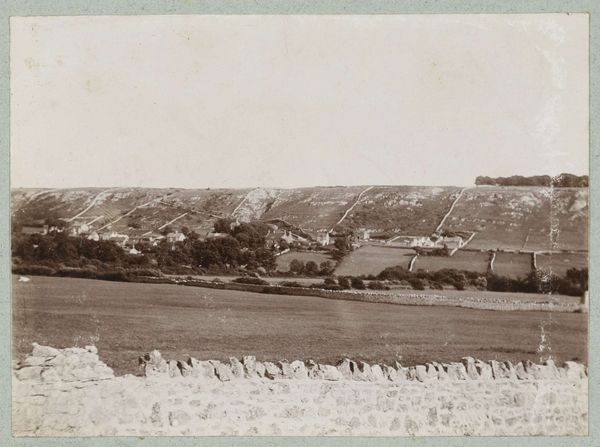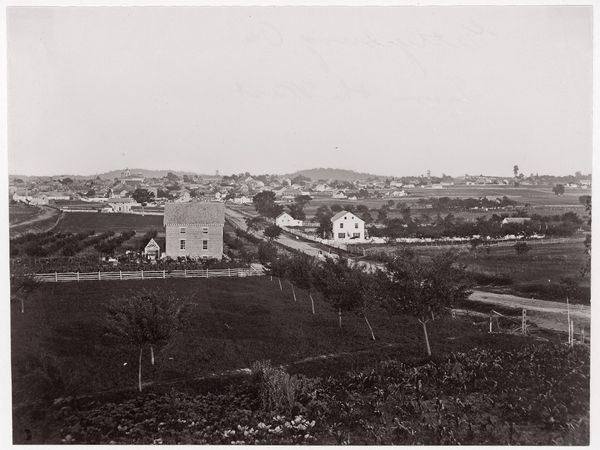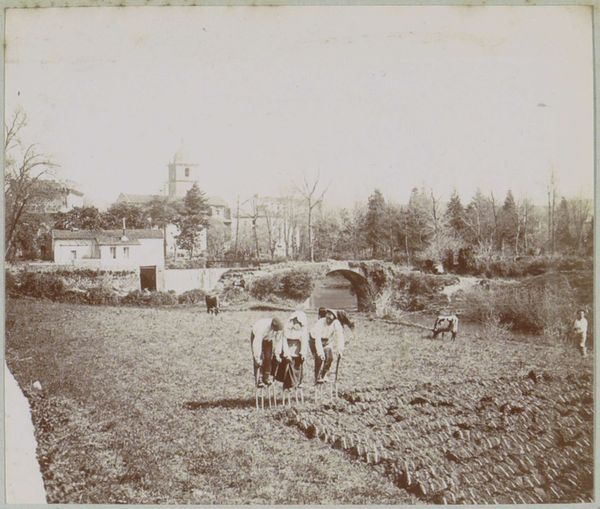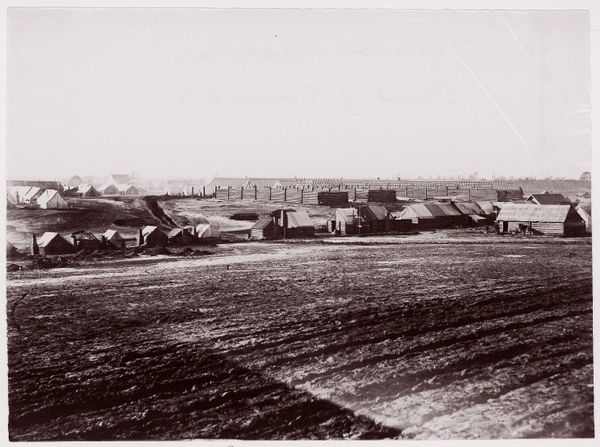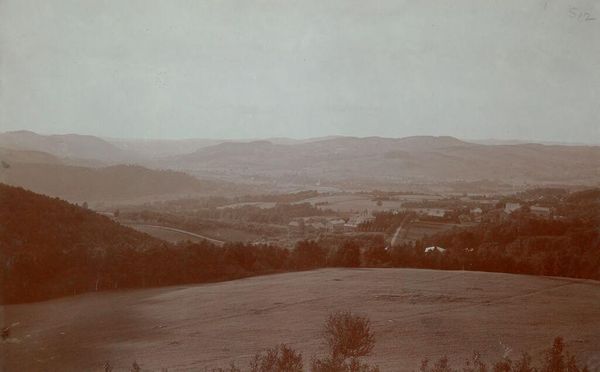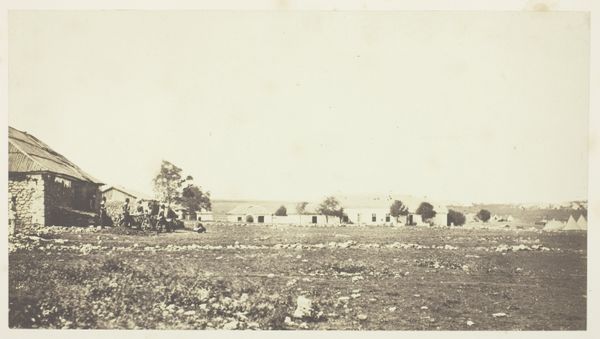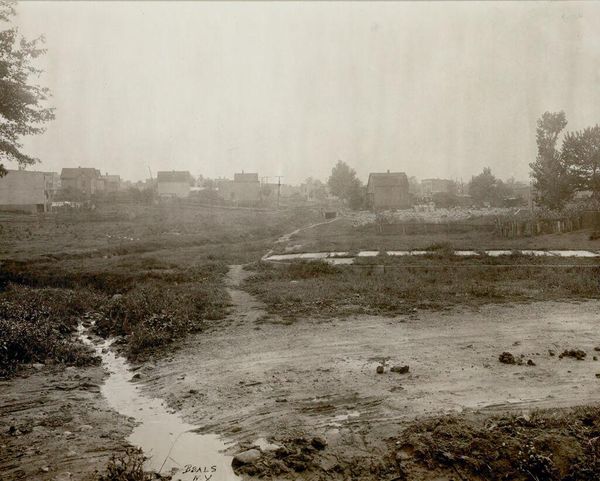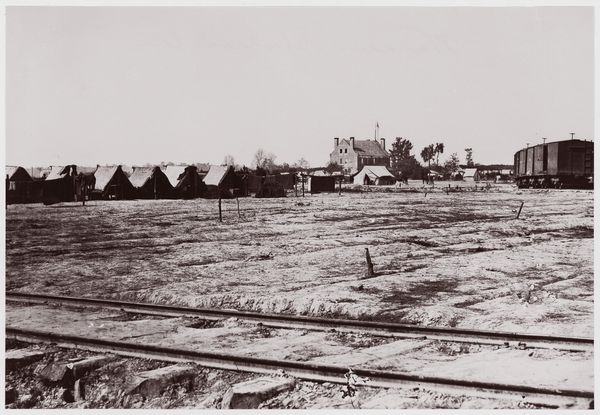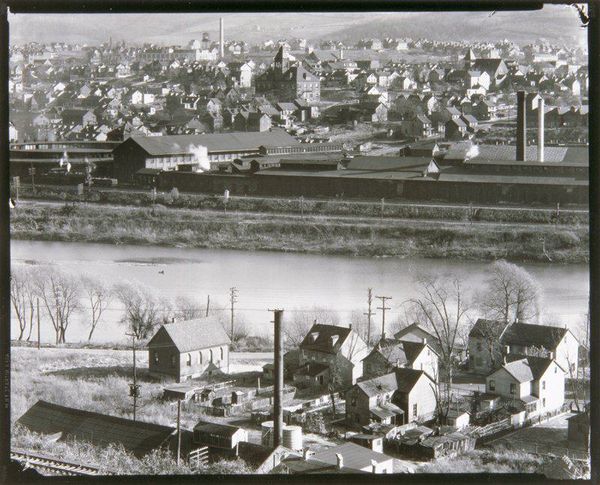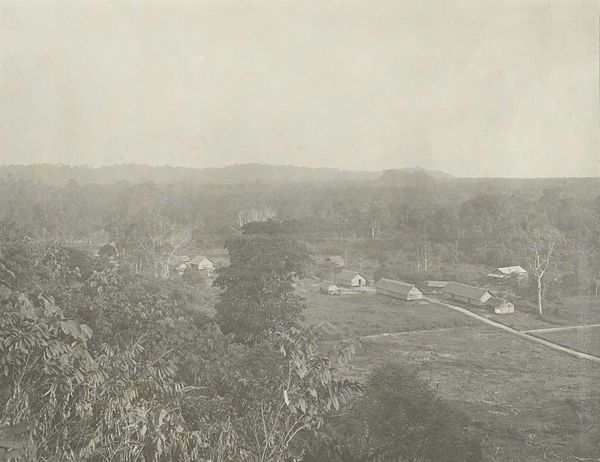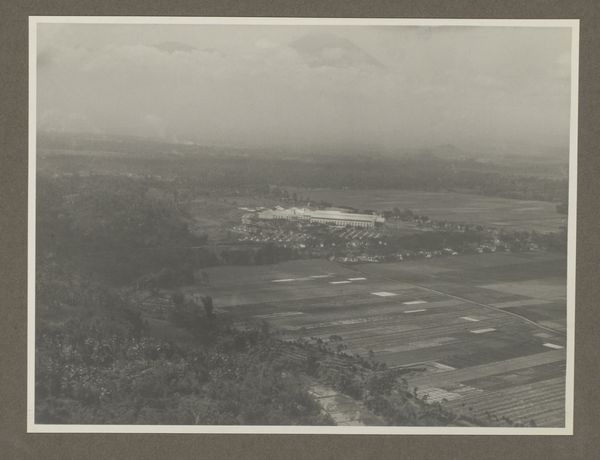
#
excavation photography
#
black and white photography
#
street shot
#
outdoor photograph
#
outdoor photo
#
black and white format
#
monochrome photography
#
street photography
#
outdoor activity
#
shadow overcast
Dimensions: height 7 cm, width 10 cm
Copyright: Rijks Museum: Open Domain
Curator: From an elevated perspective, likely between 1940 and 1945, this photograph presents a vista entitled “Uitzicht vanaf watertoren.” It resides here at the Rijksmuseum, though its photographer remains anonymous. Editor: Immediately striking! There's a stark, almost desolate feel to it. The monochrome emphasizes the textures – the fields, the buildings – yet also creates a flattening effect, making everything seem interconnected, even vulnerable. Curator: Considering its possible date, this vulnerability likely speaks volumes. What do you think this photographer was thinking of? I ask because intersectionality of world views makes the world whole. Editor: I think this photographer wants us to feel this labor that literally makes a world--farms that yield food to fill the gullets of hungry populations, building with timbers grown tall. Its existence, as this photo captures, comes from something concrete and intentional, rather than from pure thought. The materials. I think about those materials and the processes for achieving their physical realities. Curator: Absolutely! It prompts a dialogue about survival during wartime. We need to read the visual text considering the political turmoil that the country may have suffered, and what resistance might look like in daily existence, don't you think? This viewpoint gives an overseeing sense of both what one has, what one can possibly lose, and maybe what has been rebuilt or is being constructed. Editor: The composition reinforces this; the eye is drawn from foreground of dwellings up into the misty expanse beyond, suggesting both enclosure and escape. Consider also the position the vantage point might communicate about looking from above—and at what cost. Who has access to height, and is it being used for production? This really is all about perspective—but not simply how someone sees but instead on vantage points to gain understanding for means of production. Curator: That makes me ponder if the water tower location becomes another point. As a collective space where citizens may meet each other from distinct social and material circumstances it symbolizes shared necessities amid turbulent instances. That tower's position transcends simply a physical platform, acting like something important, bridging individual survival with communal fortitude during that era, no? Editor: Yes, definitely! And its physical presence reminds of water infrastructure of making something bloom. The tower's essence emphasizes the crucial interconnectedness in-between society itself but additionally about the physical labor as that gives form—and life! I now understand how critical for our consideration, material processes for building this existence were and continues to remain relevant in addressing today. Curator: Absolutely, together, the image serves both for memory and serves to provide the future with the opportunity to learn what has previously been, allowing for collective memory. Editor: Yes, let's hope the future takes these insights regarding material production in ways to empower social progress.
Comments
No comments
Be the first to comment and join the conversation on the ultimate creative platform.
